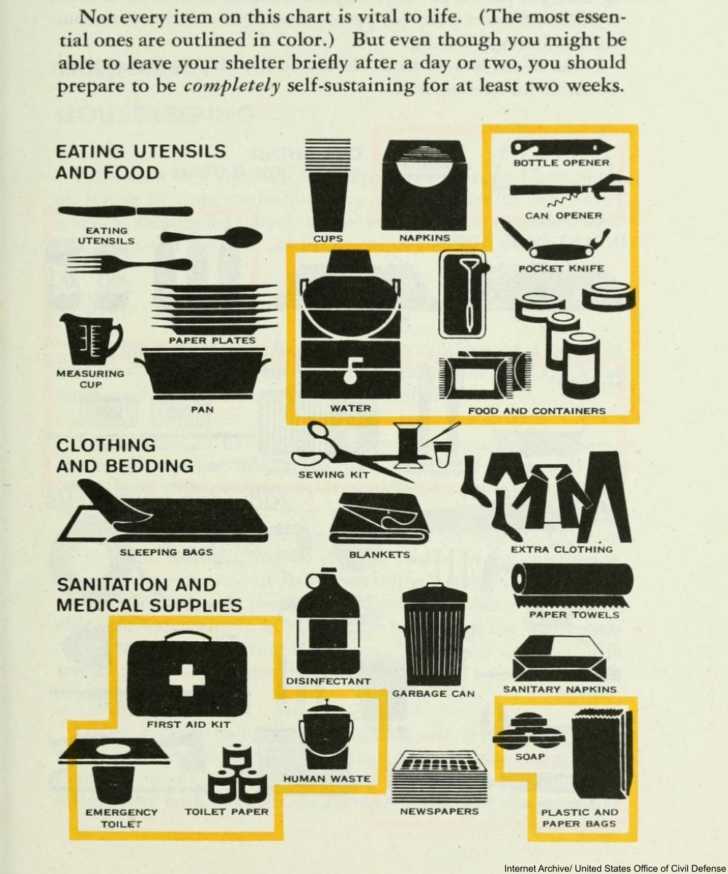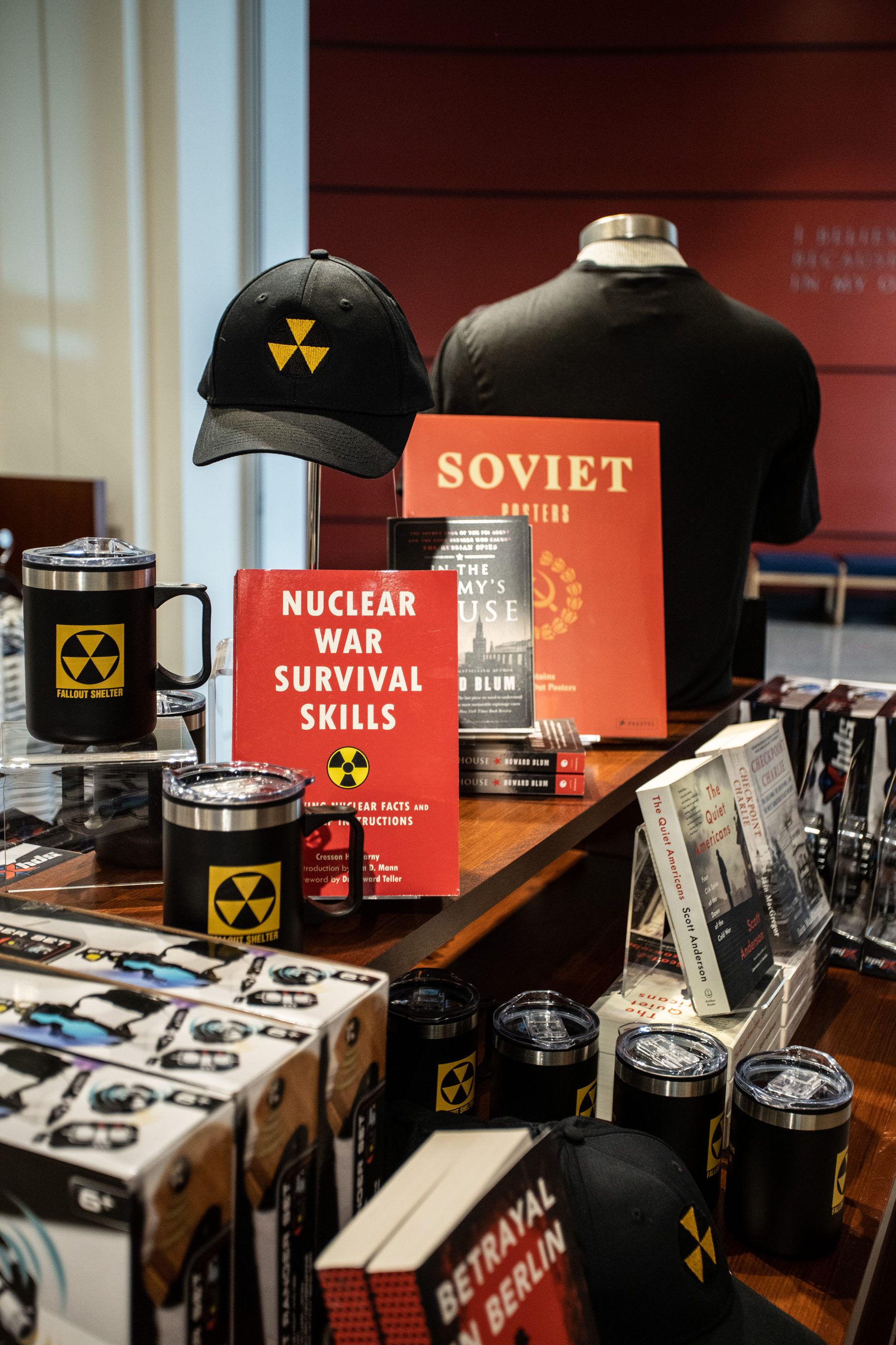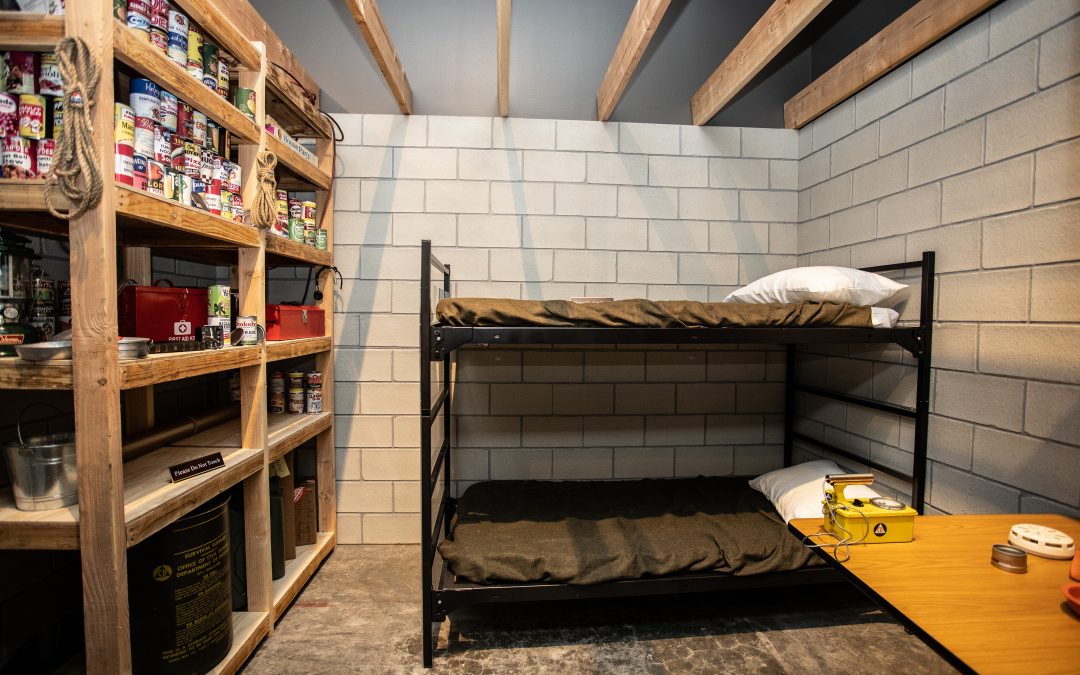A unique experience in the special exhibit Cold War: Soviets, Spies and Secrets is being able to step into a fallout shelter. Built using authentic Cold War-era plans from a local Orange County, California, shelter, visitors get to view the full scope of preparations made by everyday Americans living under the threat of nuclear war.
An interactive highlight of the exhibit is getting to operate a geiger counter to detect for radiation. Consumer products (mostly made through the 1970s) including everything from ceramics and glassware to office supplies and watches contained traceable amounts of radioactive materials. Even bananas emit a very small amount of radiation because of the high-levels of potassium found in the fruit. While food isn’t permitted in the exhibit, visitors can test out other everyday items to discover which one has the highest radiation level.
According to the booklet Fallout Protection: What to Know and Do About Nuclear Attack published in 1961 by the U.S. Department of Civil Defense, ”…you should prepare to be completely self-sustaining for at least two weeks.” The fallout shelter in the exhibit is stocked with many of the recommended items including everything from canned food to board games. This visual chart is among the detailed instructions included in the Fallout Protection booklet. Exhibit visitors can flip through a copy of this booklet and see detailed instructions provided for making personal fallout shelters.

Image credit: Fallout Protection: What to Know and Do about Nuclear Attack. United States: U.S. Government Printing Office, 1961.
Digging Up the Backyard: The Rush to Build Fallout Shelter
Fallout protection for every American as rapidly as possible. President John F. Kennedy, October 6, 1961
In 1950, President Truman signed into law the Federal Civil Defense Act, creating the Federal Civil Defense Administration, which was given the responsibility of formulating national civil defense policies.
Among the more interesting initiatives of the federal Civil Defense efforts was the creation of fallout shelters to protect people from deadly radiation released in a nuclear attack.
Initially, owners of public buildings were urged by the federal government to create fallout shelters in their facilities. But as increasing numbers of above-ground nuclear weapons tests were conducted by both the U.S. and the Soviet Union, people began building fallout shelters of their own.
In 1959, the U.S. government published a pamphlet called, “The Family Fallout Shelter.” Millions of copies of this booklet, which described how to construct and equip a fallout shelter, were distributed across the nation.
To encourage IBM’s 60,000 employees to build fallout shelters, the company’s CEO, Thomas Watson Jr., offered interest-free loans to the firm’s workforce and arranged to make the construction materials available at all cost.
Fortunately, these shelters were never put to the test.
Cold War: Soviets, Spies and Secrets is included with admission to the Nixon Library. The Nixon Library is open seven days a week from 10 AM to 5 PM.

Nixon Library admission is $25 for adults, $21 for seniors, $19 for high school and college students, $19 for retired military, active military are free, children 5-11 for $15 and children 4 and under are free.
Nixon Foundation Members enjoy complimentary admission to the exhibit as part of their membership benefits.

